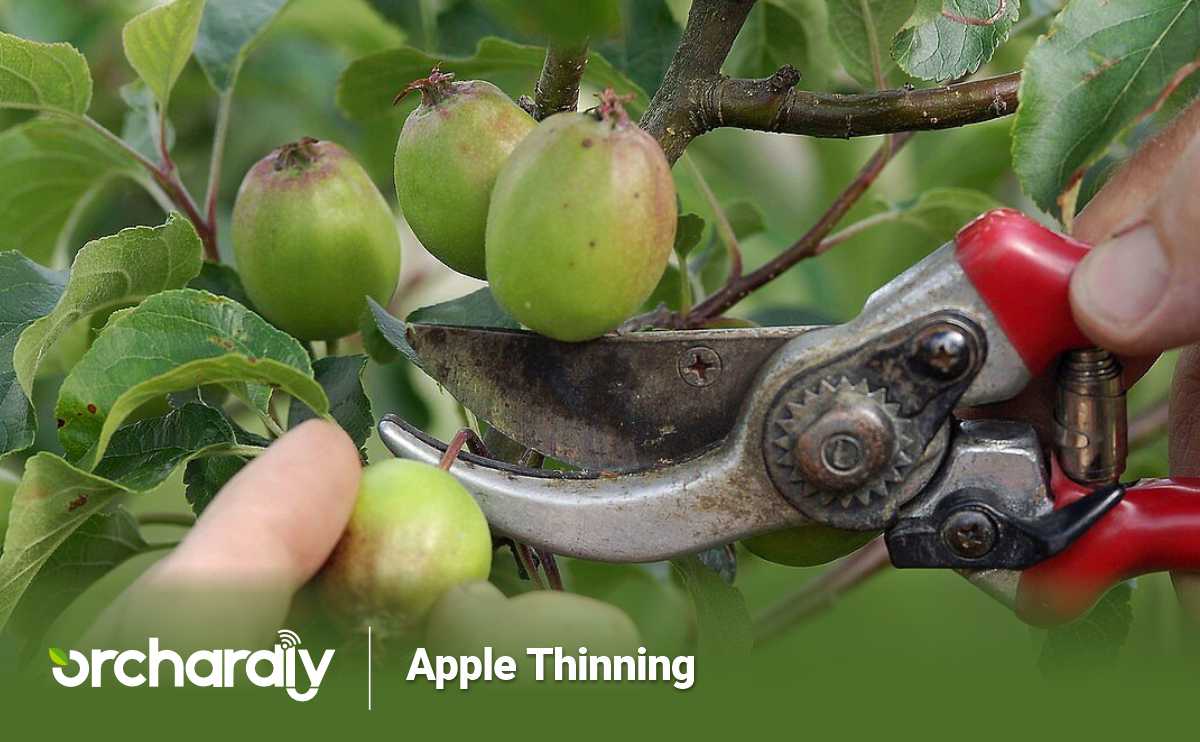As apple farmers, we need to understand the importance of optimizing fruit quality and productivity in our orchards. One crucial practice that significantly contributes to achieving these goals is apple thinning. Apple thinning involves the strategic removal of excess fruit from apple trees to improve fruit size, color, and overall quality. In this blog post, we will delve deeper into the significance of apple thinning, explore effective methods to implement it, and highlight the numerous benefits it brings specifically to apple growers.
Why should we go for thinning?
Apple trees that bear excessive crop loads often face challenges related to biennial bearing, impacting both the “on” year and the “off” year. In the “on” year, excessive fruit leads to reduced fruit size and compromised quality. In the “off” year, yields may be minimal or absent altogether. Moreover, the longevity of apple orchards may be affected due to cultivars retaining a heavy set of fruit throughout the growing season. This results in small, poorly colored, and low-quality fruits. Nutrient depletion and decreased flower bud formation for the following year are also among the consequences.
Methods of Apple Thinning
Two primary methods for apple thinning are commonly employed: hand thinning and chemical thinning.
Hand Thinning

Hand thinning is a meticulous process that involves manually removing excess apples by hand. The goal is to retain one cluster of apples every 3-4 inches along the branches. When thinning apple clusters with five or more fruits, it is recommended to remove 2-3 fruits, allowing the remaining apples to develop optimally. Hand thinning provides precise control over the crop load and is particularly effective for apple orchards with varying fruit sizes or uneven fruit distribution.
Chemical Thinning
Chemical thinning involves the use of specific chemicals to achieve the desired fruit thinning effect. Apple growers often utilize chemical thinning as a supplemental method to hand thinning, especially in large orchards. Commonly used chemicals for apple thinning include NAA (Napthalene Acetic Acid) and BA (Benzyl Adenine). These chemicals are typically applied 7-10 days after petal fall when the fruitlets are still small. It is essential to note that the response to chemical thinning is highly dependent on weather conditions, and different apple cultivars may exhibit varying sensitivities to thinning chemicals. Precise timing, dosage, and adherence to product instructions are critical when employing chemical thinning methods.
Benefits of Apple Thinning
Thinning apples in orchards offers numerous benefits specific to apple growers, including:
1. Enhanced Fruit Size
Thinning excess apples allows the remaining fruits to receive ample space, nutrients, and resources, enabling them to grow to their full potential. This results in larger, more marketable apples that meet consumer demands and command higher prices.
2. Improved Color and Quality
With reduced crop load, apple trees can allocate more resources to individual fruits, leading to better color development and improved overall fruit quality. Thinned apples tend to have improved flavor, texture, and appearance, appealing to both consumers and buyers.
3. Minimized Branch Breakage
Apple trees overloaded with fruit can experience increased stress on branches, making them susceptible to breakage. Thinning apples reduces the weight load on branches, minimizing the risk of damage and preserving the structural integrity of the tree.
4. Consistent Yield and Return Bloom
Proper apple thinning promotes the formation of flower buds for the following year. By adjusting the crop load, growers can achieve more consistent yields, ensuring a reliable supply of apples in subsequent seasons and maintaining profitability.
Conclusion
Apple thinning is a critical practice for apple farmers seeking to improve fruit size, quality, and the longevity of their orchards. Whether employing hand thinning or chemical thinning methods, precision crop load management ensures that apple trees are not burdened with excessive fruit, leading to undesirable outcomes. Thinning apples results in larger, higher-quality fruits, reduces the risk of branch breakage, and promotes consistent yields and return bloom. Embracing apple thinning techniques is an investment in the future success of apple orchards, contributing to a thriving apple industry.


